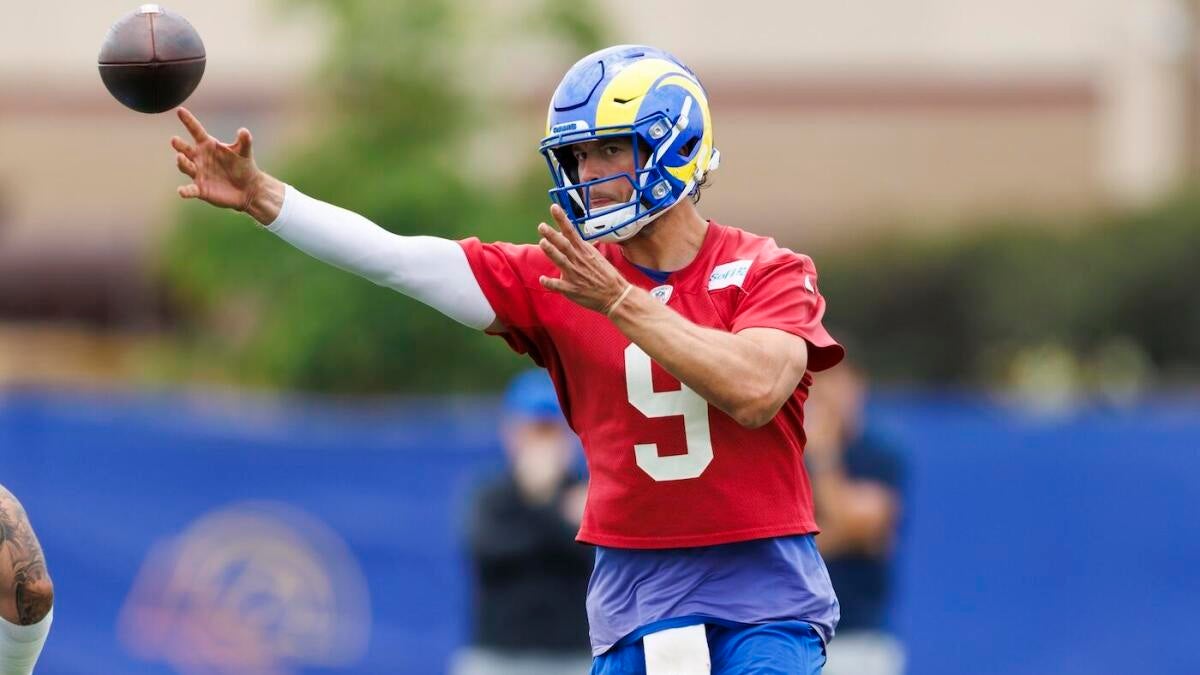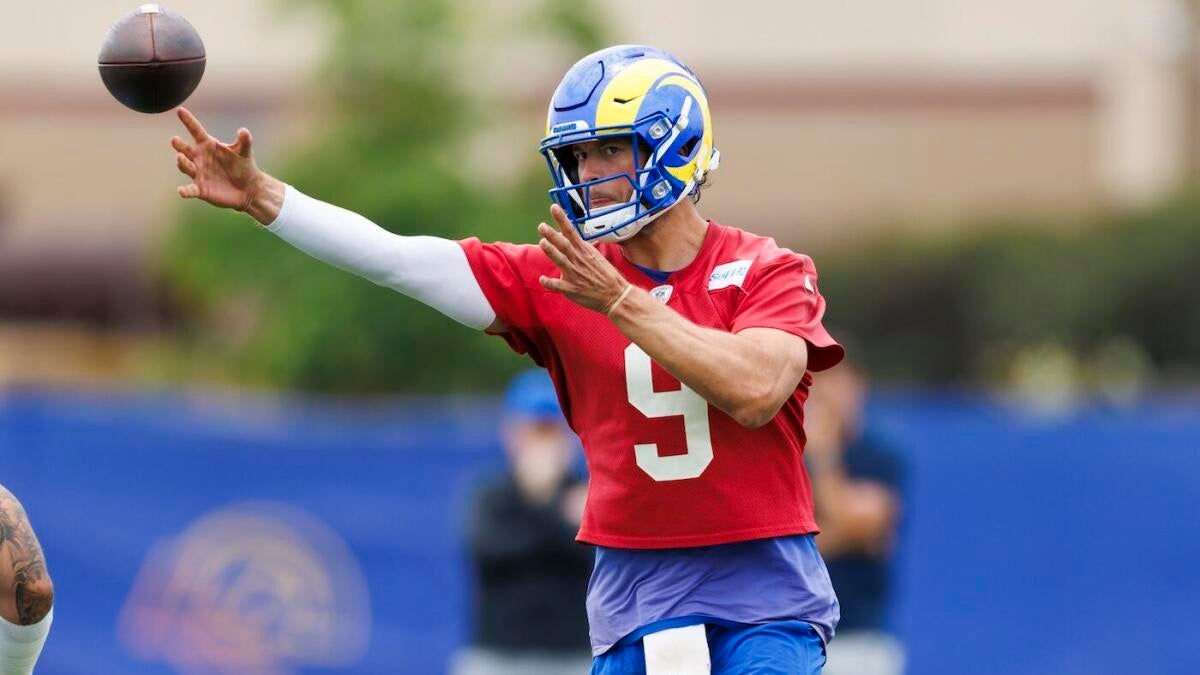The Concern Behind the Soreness: A Deep Dive into Matthew Stafford’s Back Issues and the Rams’ Strategy
Introduction
The Los Angeles Rams, fresh off their Super Bowl LVI victory, are entering training camp with a cloud of uncertainty hanging over their star quarterback, Matthew Stafford. While head coach Sean McVay has downplayed the severity of Stafford’s back soreness, the situation demands careful scrutiny. This issue is not just a minor inconvenience; it’s a critical factor that could influence the Rams’ future success. Given Stafford’s age, his injury history, and the team’s aspirations, the Rams must navigate this challenge with both short-term competitiveness and long-term sustainability in mind.
The Reality of Back Soreness: More Than Just a Cramp
Back soreness is a broad term that can encompass a variety of issues, ranging from simple muscle strains to more chronic conditions. The lack of specific details from the Rams’ camp has fueled speculation and concern among fans. Stafford, now 37, has endured a long and physically demanding career. Years of absorbing hits behind often porous offensive lines in Detroit have undoubtedly taken their toll. While he displayed remarkable resilience and toughness, these accumulated stresses can manifest as chronic back issues, potentially leading to recurring flare-ups.
The Rams’ decision to limit Stafford’s participation from the outset of training camp is a pragmatic one. It acknowledges the existing issue and prioritizes his long-term health over immediate full participation. However, it also implicitly acknowledges that the back soreness is significant enough to warrant caution. The true test will come when Stafford begins to ramp up his activity. How his back responds to increased throwing volume, movement in the pocket, and the physical demands of live practice will be crucial in determining the long-term outlook.
Sean McVay’s Optimism: A Measured Approach
Sean McVay’s public statements regarding Stafford’s condition are, as expected, optimistic. His comments like “Matthew’s feeling good” are reassuring, but they should be interpreted with a healthy dose of skepticism. Coaches often downplay injuries to avoid creating unnecessary alarm or providing opponents with strategic advantages. McVay’s emphasis on Stafford missing only the first “block” of training camp practices suggests a controlled and phased return to full activity. This approach is consistent with managing a veteran player with a known issue. The Rams are likely employing a strategy that combines rest, rehabilitation, and a gradual increase in workload to allow Stafford’s back to recover without risking further aggravation.
However, the true test will come when Stafford begins to ramp up his activity. How his back responds to increased throwing volume, movement in the pocket, and the physical demands of live practice will be crucial in determining the long-term outlook.
The Rams’ Offensive Strategy: Adapting to Stafford’s Condition
A healthy Matthew Stafford is undoubtedly vital to the Rams’ offensive success. His arm talent, experience, and ability to make quick decisions are all crucial components of their high-powered attack. However, the Rams must also prepare for the possibility that Stafford’s back issues could limit him at some point during the season. This preparation could involve several key adjustments:
Emphasis on the Run Game
Establishing a more consistent and effective running game would alleviate pressure on Stafford and reduce the need for him to throw the ball as frequently. This would not only protect him physically but also make the Rams’ offense more balanced and unpredictable.
Short, Quick Passing Game
Designing more plays that involve quick reads and short passes would allow Stafford to get the ball out of his hand quickly, minimizing the risk of taking hits. This approach would also capitalize on the Rams’ talented receivers, such as Cooper Kupp and Van Jefferson, who are adept at gaining yards after the catch.
Increased Use of Play-Action
Play-action passes can be an effective way to create favorable matchups and open up downfield opportunities. By faking the run, the Rams can force defenses to commit to the line of scrimmage, creating space for receivers to get open and reducing the likelihood of Stafford being pressured.
Strategic Rest and Load Management
The Rams should consider implementing a more proactive approach to managing Stafford’s workload throughout the season. This could involve limiting his practice reps, giving him occasional rest days, or even strategically sitting him out of certain games to preserve his health for the playoffs.
Develop a Capable Backup
While no one can truly replace Stafford’s talent, the Rams need to ensure they have a capable backup quarterback who can step in and manage the offense effectively if needed. This could involve giving more opportunities to their current backup, Stetson Bennett, or exploring other options via free agency or trade.
The Long-Term Implications: A Future Beyond This Season
Matthew Stafford is under contract with the Rams through the 2026 season. His long-term health is, therefore, a significant concern for the organization. The Rams’ approach to managing his back issues now will have a direct impact on his ability to perform at a high level in the coming years. If Stafford’s back problems become chronic and debilitating, the Rams may need to consider a succession plan at quarterback sooner rather than later. This could involve drafting a young quarterback and developing him behind Stafford or exploring other options via trade or free agency.
Navigating the Uncertainty: A Calculated Risk
The Rams’ situation with Matthew Stafford is a complex one, filled with uncertainty and potential risks. While the initial reports of back soreness are concerning, the Rams’ proactive approach to managing his condition offers some reason for optimism. The Rams are, in essence, walking a tightrope. They must strike a delicate balance between allowing Stafford to fully recover and preparing him for the rigors of the regular season. They need to be cautious and patient, but also decisive and adaptable.
The Championship Window: A Race Against Time
The Rams are in a “win-now” mode, and Matthew Stafford is central to those ambitions. His health will dictate just how far they can go. The team’s Super Bowl aspirations hinge on Stafford being able to lead the offense effectively throughout the season and into the playoffs. The back soreness is a stark reminder that the championship window, while still open, may not stay that way forever. The Rams must navigate this challenge with both short-term competitiveness and long-term sustainability in mind, a balancing act that will define their success in the seasons to come.












